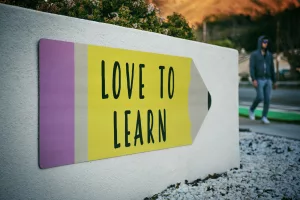Reflecting on how you spend your free time can be a game-changer in leading a fulfilling life. When you wrap up your day feeling accomplished and satisfied, it’s a good sign that you’ve used your time wisely. But how can you ensure this happens consistently? Let’s explore some practical strategies to make the most out of your free time, and dive deep into the art of balancing productivity with relaxation.
Setting Clear Goals and Prioritizing Tasks
Crafting Your Goals
To maximize your free time, the first step is setting clear, achievable goals. Start by identifying what you truly want to accomplish. Perhaps you wish to learn a new language or improve your fitness level. Once you’ve identified these goals, break them down into smaller, manageable tasks. This makes even the most ambitious aspirations feel attainable. For example, if learning Spanish is on your list, begin with 15 minutes of vocabulary practice each day. Over time, these small efforts compound into significant progress.
Consider using the SMART criteria to ensure your goals are Specific, Measurable, Achievable, Relevant, and Time-bound. For instance, instead of saying “I want to get fit,” specify “I will run a 5K within the next three months.” This clarity provides motivation and a clear path forward.
Prioritizing Effectively
Not all tasks are created equal. Prioritizing based on importance and urgency can help you focus on what truly matters. One effective method is the Eisenhower Box, which categorizes tasks into four types: urgent and important, important but not urgent, urgent but not important, and neither urgent nor important. By focusing on tasks that are important but not necessarily urgent, you can make proactive progress towards your goals rather than just reacting to daily demands.
Another useful approach is the ABCDE method. Label your tasks from A (most important) to E (least important), and tackle them in order. This technique forces you to make tough choices about what truly deserves your attention.
Creating a Daily Routine
Establishing a daily routine can significantly enhance how you utilize your free time. Routines reduce decision fatigue and help you transition smoothly between various activities. For example, start your morning with a set of rituals like stretching, drinking water, and reviewing your daily goals. These habits set a productive tone for the day.
Avoiding Time-Wasting Activities
Identifying the Culprits
We all have activities that sneakily steal our time without offering much in return. Social media, for instance, can be a huge time sink. Setting boundaries, such as limiting your social media use to 30 minutes a day, can free up significant time for more meaningful activities. Consider tracking your screen time to gain insights into where your time goes and make informed adjustments.
Apps like RescueTime or Screen Time on your smartphone can provide detailed reports on your digital habits. These insights often reveal surprising patterns, like how frequently you check your phone or how long you spend on certain apps.
Replacing with Meaningful Pursuits
Once you’ve identified and curtailed time-wasters, it’s crucial to fill that space with activities that align with your goals and values. If you find yourself mindlessly scrolling through your phone, replace that habit with reading a book or going for a walk. The key is choosing activities that not only entertain but also enrich your mind and soul.
Consider creating a “bucket list” of activities that excite and inspire you. Whenever you have some downtime, refer to this list instead of defaulting to less productive habits. This could include visiting a local museum, trying a new recipe, or learning a new skill.
Avoiding Multitasking
Multitasking might seem like a time-saver, but it often leads to inefficiency and stress. Focus on one task at a time to improve quality and speed. For instance, if you’re working on a project, silence your phone and close unrelated tabs to minimize distractions.
Practicing Mindfulness and Self-Care
Mindfulness Techniques
Mindfulness is more than just a buzzword; it’s a powerful tool for staying present and fully engaged in your activities. Techniques such as deep breathing, meditation, or simply being aware of your surroundings can enhance your ability to focus and enjoy each moment. Consider starting your day with a five-minute meditation session to set a calm and intentional tone.
Yoga and tai chi are also excellent practices that incorporate mindfulness and movement, promoting relaxation and concentration. These can be particularly beneficial if your free time involves a lot of sitting or screen time.
Prioritizing Self-Care
Taking care of your mental, emotional, and physical well-being is paramount. Self-care isn’t selfish—it’s necessary for maintaining the energy and resilience needed to tackle your goals. Regular exercise, balanced nutrition, and adequate sleep are foundational. Additionally, treat yourself to activities that recharge your spirit, such as spending time in nature or enjoying a hobby you love.
Consider scheduling “me-time” each week, where you focus solely on activities that bring you joy and relaxation. This might mean indulging in a spa day at home, pursuing a creative project, or simply enjoying a quiet evening with a good book.
Practicing Gratitude
Incorporating gratitude into your daily routine can transform how you perceive and utilize your free time. Start or end your day by jotting down three things you’re grateful for. This practice shifts focus from what’s lacking to what you have, enhancing contentment and motivation.
Seeking Personal Growth and Development Opportunities
Exploring New Interests
Your free time is a golden opportunity for personal growth. Engaging in activities that challenge you intellectually and creatively can lead to a more fulfilling life. Whether it’s picking up a new hobby like painting or taking an online course in a subject you’ve always been curious about, these pursuits can broaden your horizons and boost your confidence.
Platforms like Coursera, Udemy, or MasterClass offer a myriad of courses that can fit into any schedule. Whether you want to delve into coding, photography, or philosophy, there’s something out there for everyone.
Embracing Challenges and Stepping Out of Comfort Zones
Growth often happens outside of our comfort zones. Embrace challenges as opportunities to learn and evolve. Consider joining a local club or group that aligns with your interests—this not only expands your social circle but also exposes you to new ideas and perspectives.
Public speaking, for instance, is a common fear but can be incredibly rewarding if you push through the discomfort. Joining a group like Toastmasters can offer a supportive environment to hone this skill.
Setting Aside Time for Reflection
Reflection is a critical component of personal development. Allocate time each week to review your experiences, learnings, and achievements. Ask yourself questions like, “What did I learn this week?” or “How can I improve?” This habit fosters continuous growth and self-awareness.
Building a Balanced Life
The Art of Balancing Work and Play
It’s essential to strike a balance between productivity and relaxation. Over-scheduling can lead to burnout, while too much leisure can result in missed opportunities. A balanced schedule includes time for work, relaxation, exercise, social activities, and personal development. Consider creating a weekly planner to visualize and allocate your time effectively.
Some people find success with time-blocking, where specific blocks of time are dedicated to different activities. This method ensures you’re not neglecting any aspect of your life, from career to leisure.
Recognizing and Adjusting to Life’s Ebbs and Flows
Life is dynamic, and so should be your approach to managing free time. Some days may demand more rest, while others offer the energy for tackling ambitious projects. Listen to your body’s cues and adjust accordingly. Flexibility is key to maintaining a balanced and fulfilling life.
Seasons and life stages can also influence your priorities. Be open to recalibrating your schedule as needed, whether it’s the beginning of a new school year, a change in job, or a personal milestone.
Incorporating Breaks and Downtime
Regular breaks are crucial for maintaining focus and productivity. Techniques like the Pomodoro Technique—where you work for 25 minutes and then take a 5-minute break—can help you manage energy levels throughout the day. Use breaks to stretch, hydrate, or simply relax.
The Role of Reflection and Adaptation
Regularly Reviewing Your Progress
Consistency in reviewing your goals and activities is vital. Set aside time each week to reflect on what you’ve accomplished and where you can improve. This practice not only keeps you on track but also reinforces your commitment to your priorities.
Use a journal or a digital app to record your reflections. Over time, these entries can serve as a valuable resource for understanding patterns in your productivity and well-being.
Adapting to Change
Life circumstances change, and your goals may need to adapt accordingly. Be open to shifting your priorities and trying new strategies when needed. This adaptability ensures that you continue to make the most of your free time, regardless of life’s unforeseen twists and turns.
Consider conducting a quarterly review of your goals and routines. This larger-scale reflection allows you to adjust your direction and strategies based on what’s working and what’s not.
Cultivating Resilience
Resilience is the ability to bounce back from setbacks and challenges. Building resilience involves developing a positive mindset and coping mechanisms. Practices like mindfulness, gratitude, and seeking support can enhance your resilience, allowing you to adapt more effectively to life’s changes.
Building Relationships and Connections
Nurturing Social Connections
Your free time is also an opportunity to build and nurture relationships. Spending quality time with loved ones can be incredibly fulfilling. Whether it’s a family dinner, a catch-up call with a friend, or participating in community events, these interactions enrich your life and provide a support network.
Plan regular social activities, such as monthly game nights or weekend hiking trips, to maintain and strengthen these bonds. In today’s digital age, virtual hangouts can also be a great way to stay connected with distant friends and family.
Volunteering and Giving Back
Consider using some of your free time to give back to the community. Volunteering not only benefits others but also provides a sense of purpose and connection. Whether helping at a local shelter, tutoring students, or participating in neighborhood clean-ups, these activities can be deeply rewarding.
Research local organizations or causes that resonate with you. Many volunteer opportunities can be found through platforms like VolunteerMatch or local community centers.
Expanding Your Network
Networking isn’t just for career advancement; it’s a way to meet interesting people and learn from diverse perspectives. Attend workshops, seminars, or social gatherings related to your interests to expand your network. These connections can lead to new opportunities, friendships, and collaborations.
Cultivating Creativity and Innovation
Engaging in Creative Activities
Creative pursuits are a fantastic way to utilize free time. Whether it’s writing, drawing, or playing music, these activities stimulate the brain and offer a sense of accomplishment. Set aside a dedicated time each week to explore your creative side, and don’t be afraid to experiment with new forms of expression.
Creative journaling or doodling can be a fun, low-pressure way to express creativity. These activities can also serve as a form of meditation, helping to clear your mind and inspire new ideas.
Encouraging Innovation
Innovation doesn’t just happen in the workplace; it can thrive in your personal life too. Approach problems or projects with a creative mindset, and you might find new solutions or ideas. This not only enhances your problem-solving skills but also keeps your mind active and engaged.
Host a regular “idea session” with friends or family where you brainstorm solutions to everyday challenges. This collaborative approach can spark innovative thinking and lead to practical improvements in your life.
Embracing a Growth Mindset
Adopting a growth mindset—the belief that abilities can be developed through dedication and hard work—can significantly impact how you approach challenges and opportunities. Embrace failures as learning opportunities, and celebrate progress, no matter how small.
By integrating these strategies into your routine, you can transform your free time into a source of personal growth, fulfillment, and joy. Remember, the goal isn’t to fill every moment with productivity; it’s about making conscious choices that align with your values and aspirations.



